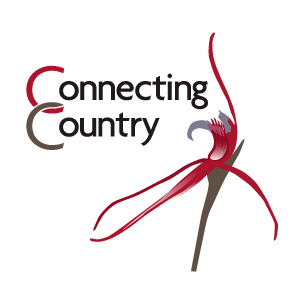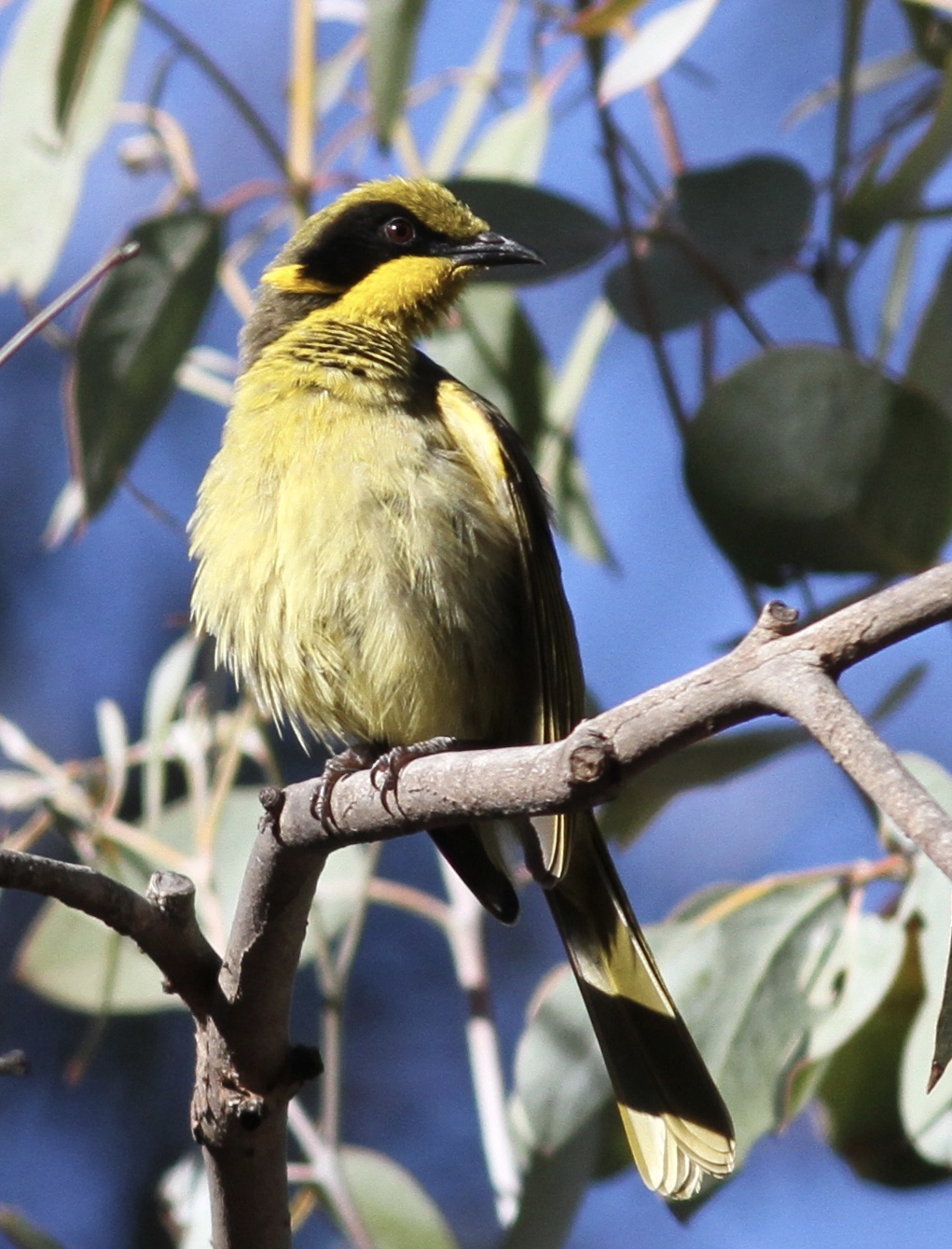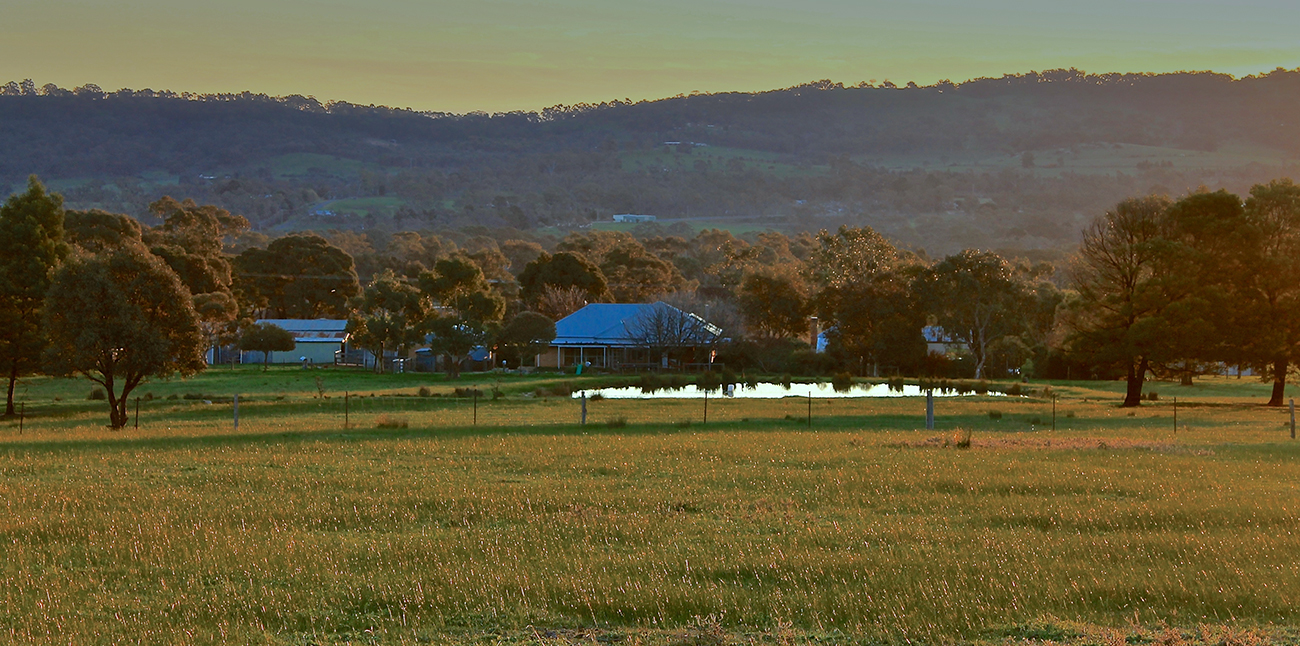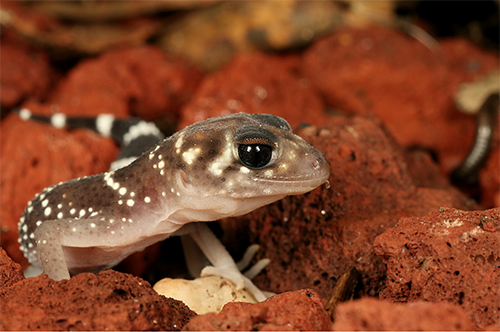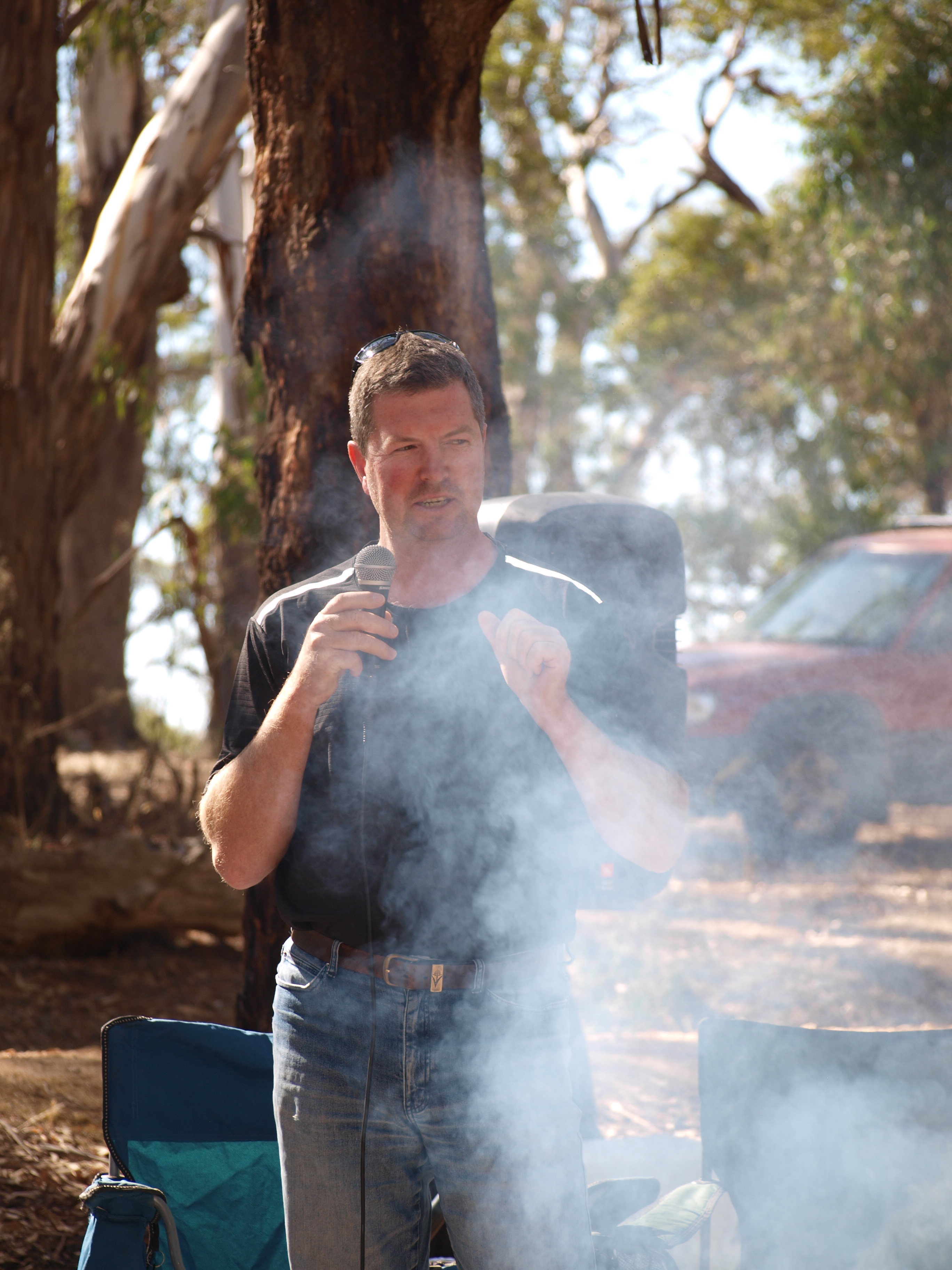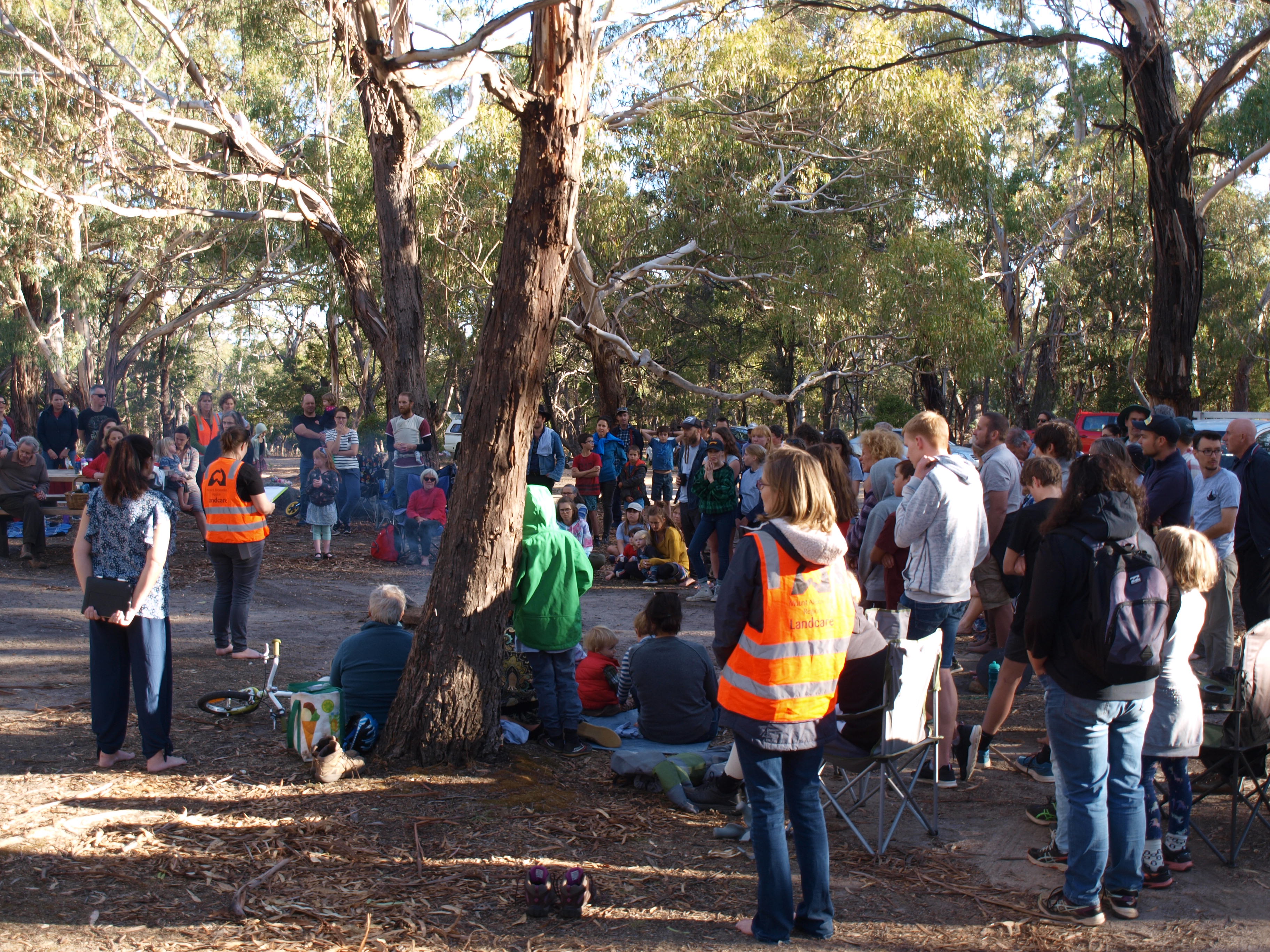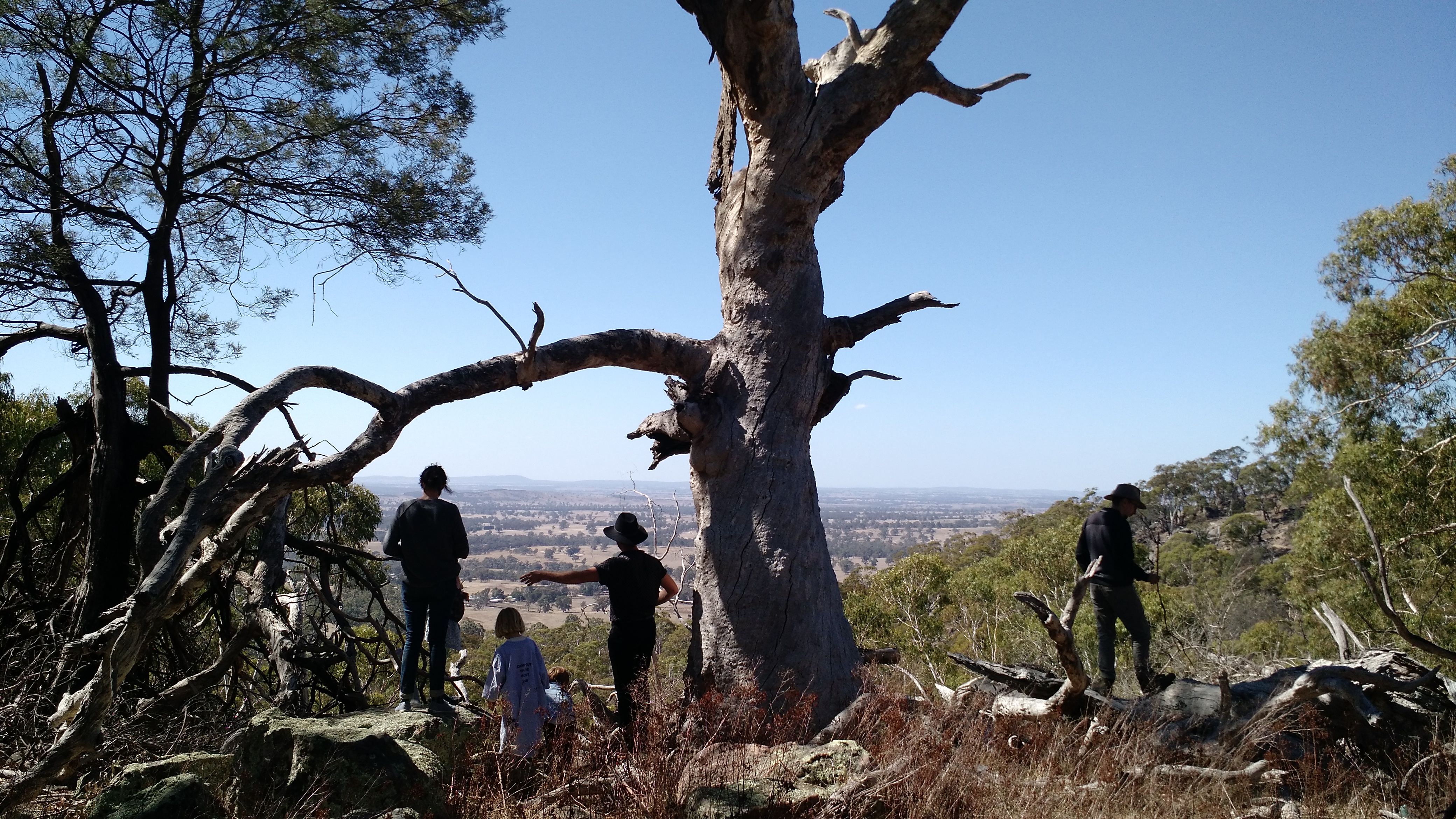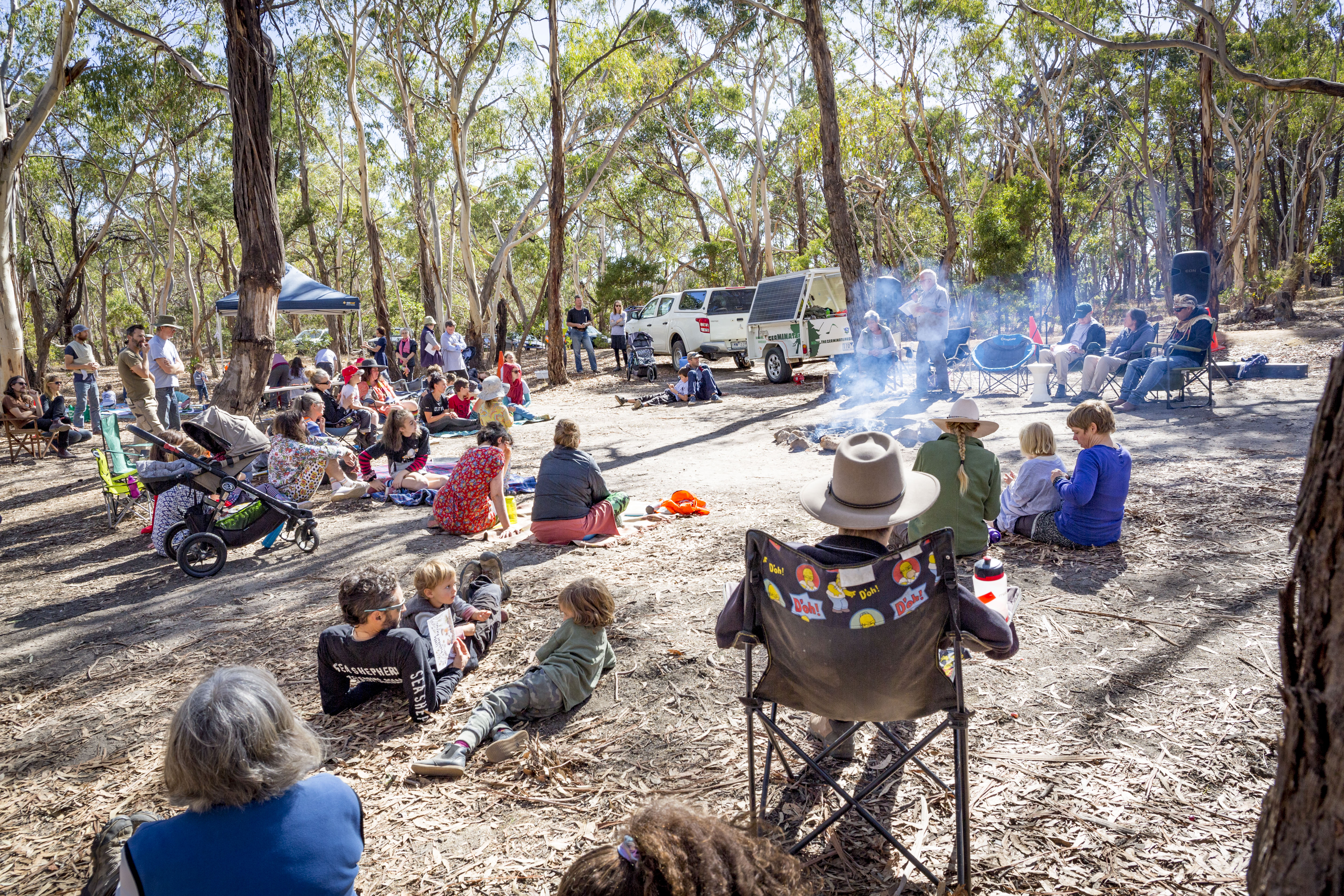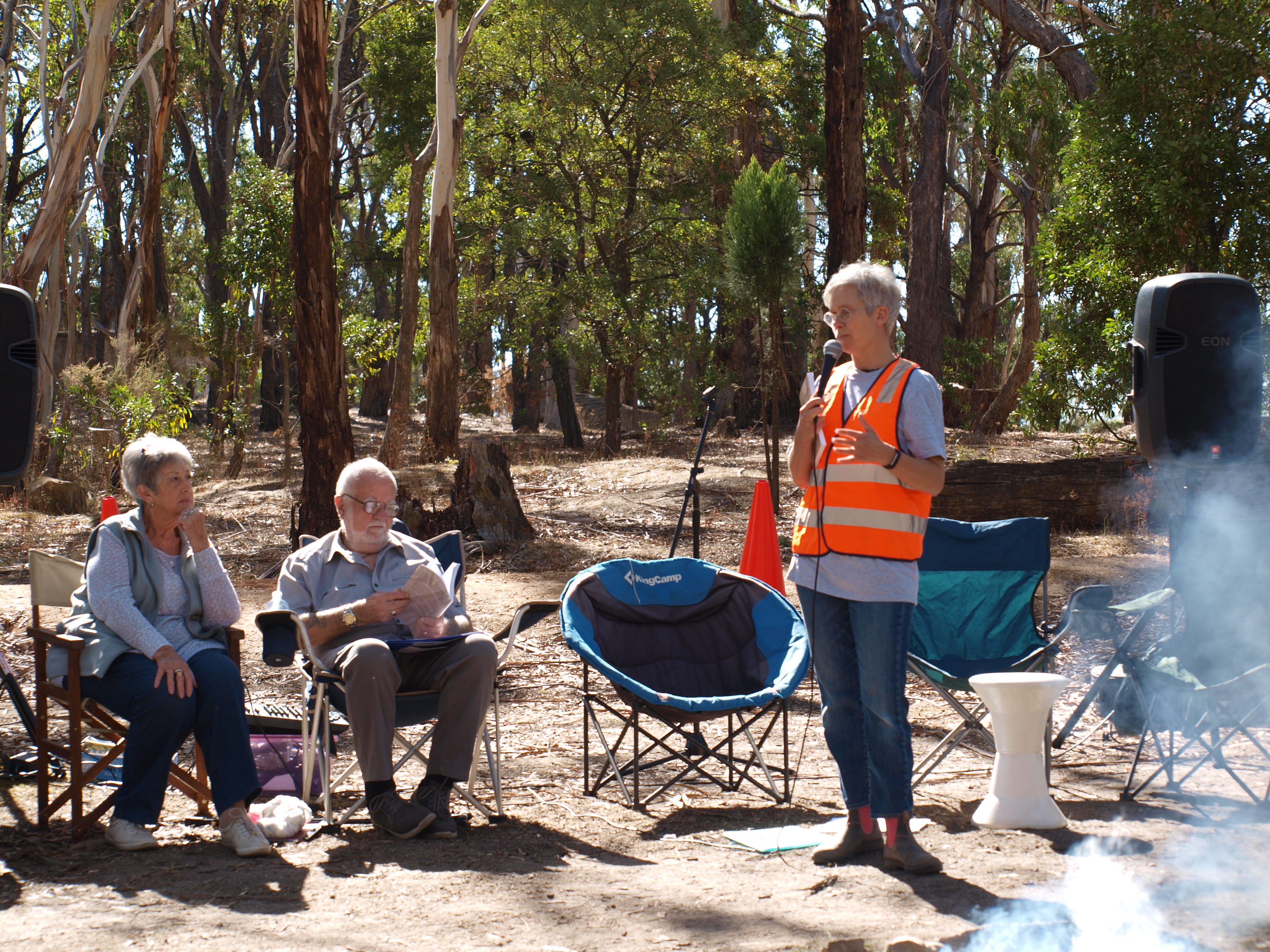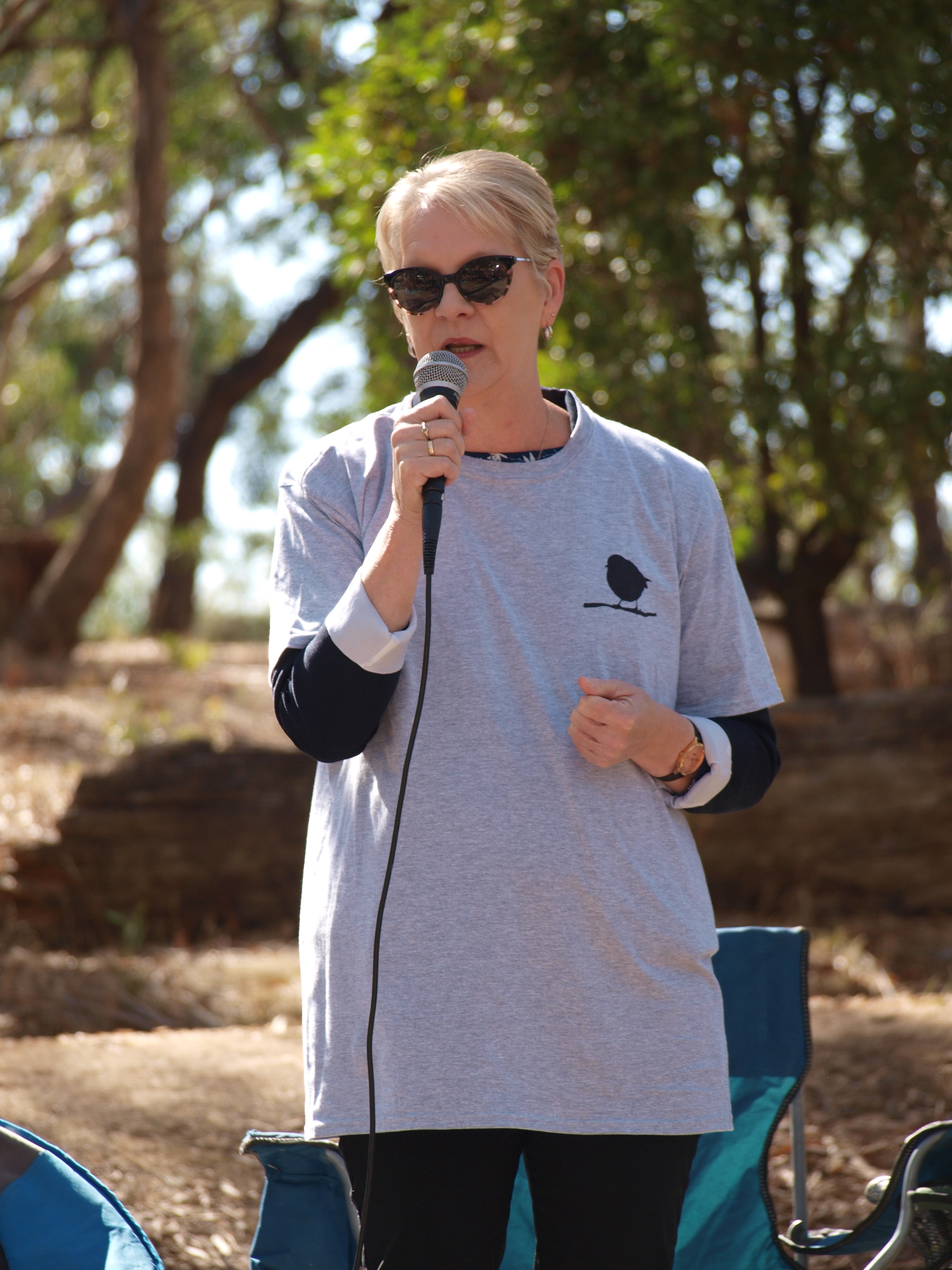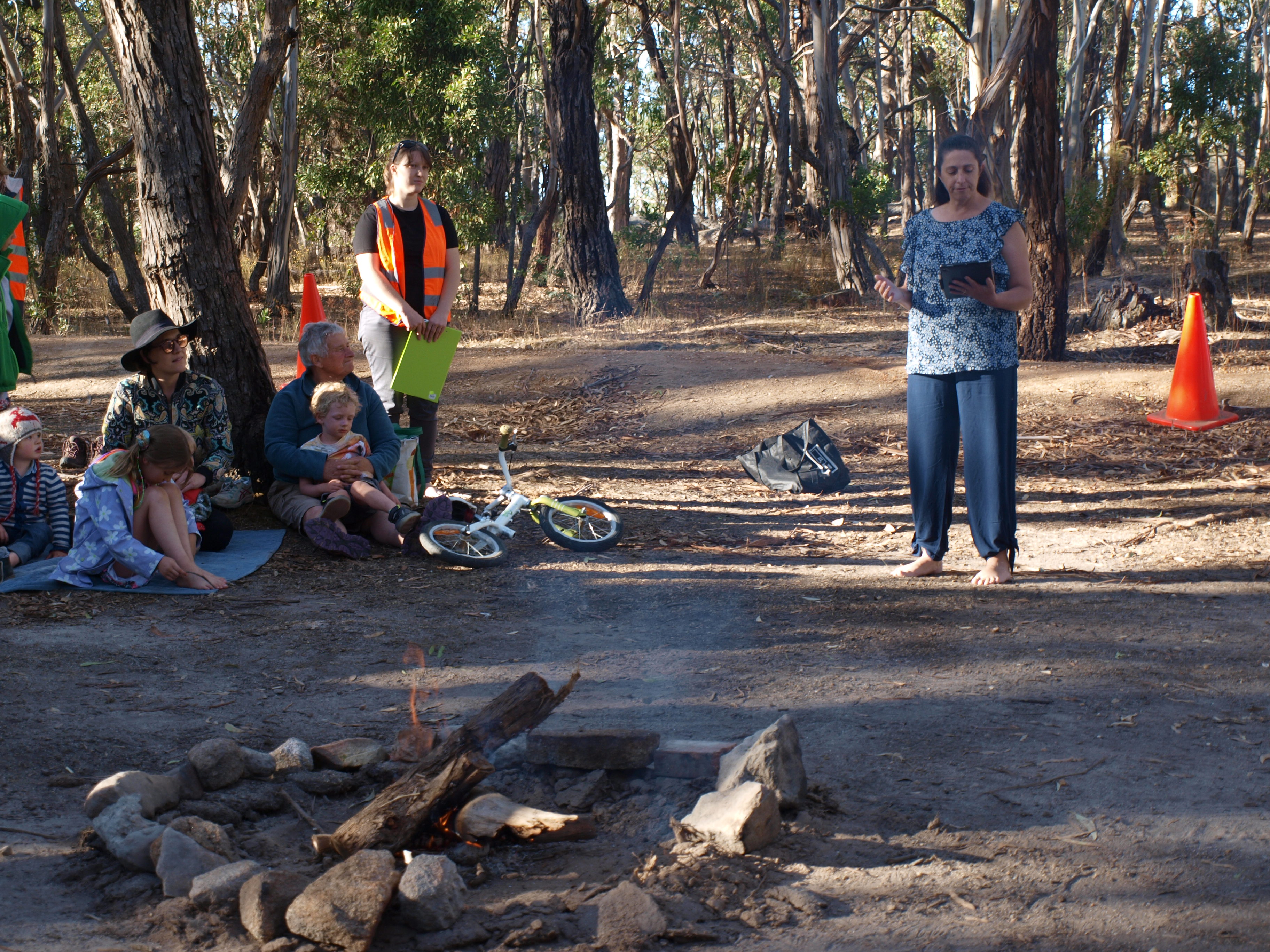May 2019 bird walks with BirdLife Castlemaine
Posted on 1 May, 2019 by Ivan
Come and join Birdlife Castlemaine District on two great walks coming up in May! For details, please see the following information from Birdlife Castlemaine.
Saturday 4 May 2019 – Red, White and Blue Mine Site, Muckleford Forest
As usual, we will do a couple of 20 minute 2 hectare surveys. If we’re really lucky, we may even spot some Swift Parrots at this site! Asha Bannon will lead us on a gentle walk along Bells Track, which is a level and easy-to-follow path. We won’t be going far (2 km maximum). Information about the site’s history, ecological values, and location can be found here.
Please note that there is a dam near the car park and, while the mine is covered, there are some decent-sized gaps in the mesh, so keep a close eye on any children you bring along.
Location and directions: From Castlemaine, take the Castlemaine-Maldon Road. Turn south onto Muckleford-Walmer Road, then right onto the Muckleford School Road, continuing into Muckleford Forest. We will meet at the car park next to the mine, at the intersection of Bells Lane Track and Red, White and Blue Track.
Time: Meet at Red, White and Blue Mine at 8.30 am, or to carpool from Castlemaine meet at 8.15 am outside Castlemaine Community House (former Continuing Ed), 30 Templeton Street, Castlemaine VIC.
Following the walk, you are welcome to join us at the BirdLife Castlemaine District Annual General Meeting.
Sunday 26 May 2019 – Rise and Shine Reserve, Sandon
Join BirdLife Branches Ballarat and Castlemaine District for a bird walk at Rise and Shine Reserve, located between Newstead and Daylesford. The Reserve is a hot spot for renowned photographer, ecologist and blog publisher Geoff Park. We will walk a loop on rough dirt vehicle tracks, with the possibility of walking off track through the bush. Afterwards if you’re keen for more bird watching, you can do the Rise and Shine Reserve Nature Walk accessed via Ramseys Lane.
Location and directions: Turn off the Daylesford-Newstead Road onto Zumpes Road, which is narrow a dirt road with blind crests. Continue straight ahead at the first road junction (turning left will take you to private property). Currently there are beehives on your right. Strictly speaking you will no longer be on Zumpes Road. Shortly after this is another road junction with a ‘No Through Road’ sign on it – find a place to park here.
Time: Meet at Rise and Shine Reserve at 9.00 am, or to carpool from Castlemaine meet at 8.30 am outside Castlemaine Community House (former Continuing Ed), 30 Templeton Street, Castlemaine VIC.
Important information about walks: Bring water, snacks, binoculars, hat, sunscreen, sturdy shoes, long pants during snake season, and other weather-appropriate gear.
Walks will be cancelled if the temperature is forecast to be 35 degrees or more during the walk period, severe weather warnings are forecast, and/or if the day has been declared a Total Fire Ban.
Questions? If you have questions about our walks program, you can email BirdLife Castlemaine at castlemaine@birdlife.org.au, or call Judy Hopley (0425 768 559) or Asha Bannon (0418 428 721).
BirdWatch workshop – 19 May 2019
Posted on 1 May, 2019 by Jess
Bird monitoring at Connecting Country
Scientific monitoring has always been a high priority at Connecting Country. As of 2019, our staff and volunteers have collected over 24,000 individual bird records, and our data has been analysed by experts at BirdLife Australia and La Trobe University.
Thanks to funding from the Helen Macpherson Smith Trust for our Habitat Health Check project, we’re transitioning from in-house monitoring to a community-driven monitoring model. This program will draw upon the power of the community to contribute as volunteer citizen scientists. Our citizen scientists are key players in the entire scientific process – including the development of research and monitoring questions – as well as collecting data.
Here is your opportunity to get involved!
Connecting Country and Birdlife Castlemaine District are running a workshop from 1.00 pm on Sunday 19 May 2019 in Chewton VIC. We’ll be asking community members what we most need to learn about birds in the Mount Alexander Shire. There will be lots of opportunity for your input and discussion.
If you’re interested in local birds, we’d love to have your input on the day. In the meantime, please have a think about what questions you have about our bird populations.
Register here: https://www.trybooking.com/BCLHD.
Please feel free to contact jess@connectingcountry.org.au if you need any further information.
Also – save the date!
We will be recruiting team leaders and volunteers to inform and guide our various citizen science programs (including birders, nest box enthusiasts, plant nuts, reptile watchers and froggers). To start with, Birdlife Castlemaine district and Connecting Country will be running a workshop on bird monitoring in the afternoon on Sunday 23 June 2019. Details to follow!
Victorian Weeds Conference – 7-8 May 2019
Posted on 18 April, 2019 by Jacqui
Registrations are open for the Victorian Weeds Conference in Echuca on 7-8 May 2019.
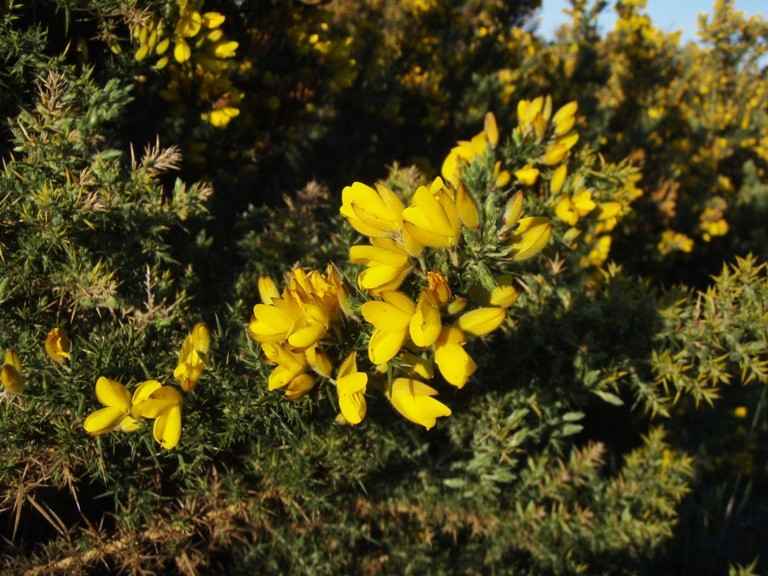
Learn about community approaches to tackling Gorse, a Weed of National Significance (Photo: Victorian Gorse Taskforce)
We are excited to see local group the Tarrangower Cactus Warriors presenting on the role of biological control in the war against Wheel Cactus, as part of the community action session. The broader conference program will cover a diverse and interesting range of topics including environmental and agricultural weed control, biological control, community action, species in the spotlight, innovative solutions, and demonstrations.
The program includes an optional lunch cruise through the Gannawarra Wetlands at Koondrook on 8 May 2019.
Victorian Weeds Conference 2019
Where: Mercure Port of Echuca, 465 High St, Echuca VIC
When: 7-8 May 2019
Cost: $100-$210, see pricing details here
For registrations and further information: visit Weed Society of Victoria website (www.wsvic.org.au/events) or email Bec James (admin@wsvic.org.au).
Registrations close on 1 May 2019.
Beginners farm fencing course – 28 April 2019
Posted on 16 April, 2019 by Frances
Back by popular demand!
Due to the success of the March course, Hillside Acres is running another Beginners Farm Fencing course on Sunday 28 April 2019 in Harcourt VIC.
Jarrod from Hillside Acres says:
‘We will build a new farm fence so you can try all the skills that go into fencing. You will come away with the skills and knowledge to design and construct a new fence, and repair old fences.’
This hands-on course will be run in Harcourt from 8.30 am to 12.30 pm with a substantial and yummy morning tea supplied.
Cost is $150 per person.
This will be a fun and friendly opportunity to learn farm fencing.
To see the course flier – click here
For more information and bookings contact Jarrod by email (info@hillsideacres.com.au) or phone (0438 069 849).
Desperate plight of the Orange-bellied Parrot – 8 May 2019
Posted on 16 April, 2019 by Frances
Bendigo Field Naturalists Club and Snowgum Press Films are presenting a special screening of the documentary ‘The Desperate Plight of the Orange-bellied Parrot’, a film by David Neilson on Wednesday 8 May 2019 in Bendigo, Victoria
The Orange-bellied Parrot migrates between the Australian mainland and Tasmania, spending summer breeding in Tasmania and winter in coastal Victoria and South Australia. It is one of Australia’s most threatened species, with less than 50 parrots thought to exist in the wild. Like many of our local birds, threats include habitat loss and modification, predation by cats and foxes and weeds, as well as collisions with structures, and inbreeding.
This is a fundraising event for the critically endangered Orange-bellied Parrot. All funds raised go to support conservation efforts. Tickets are $15 (children free). Numbers are limited so register now to secure a seat. A special ‘meet the film-maker’ session and nature photography discussion is available prior to the screening ($20).
For further information please see the flyer – click here.
To book your seat contact Bendigo Field Naturalists Club via their website (http://www.bendigofieldnaturalists.asn.au) or email (info@bendigofieldnaturalsts.asn.au).
To find out what is being done to preserve the habitat and remaining populations of the Orange-bellied Parrot, please visit the Birdlife Australia website by clicking here
Easter walk with Friends of the Box-Ironbark Forests – 21 April 2019
Posted on 16 April, 2019 by Ivan
The Friends of the Box-Ironbark Forests (FOBIF) are conducting their monthly walk this Easter Sunday (21 April 2019), along Salters Creek near Castlemaine. These regular Sunday walks (click here for dates) are free and open to anyone to join. They meet at 9.30 am outside Castlemaine Community House (30 Templeton St, Castlemaine VIC) and carpool to the start of the walk. Please bring water, morning tea and lunch. Walks usually finish mid afternoon and are cancelled on Total Fire Ban days in the area.
Salters Creek
This month’s walk will be along Salters Creek in Glenluce. Starting at the Hunters track dam, the 5 km walk includes some tracks, some walking through bush along the creek bed and a couple of rough steep climbs. FOBIF suggests that if you usually use walking poles, bring them along for this walk. As it’s Easter Sunday they have planned a shorter walk and plan to be back in town by 1.00 pm.
For more information contact Julie Hurley or Rex Odgers on 0427 002 913.
Learning under the stars – Camp Out on the Mount 2019
Posted on 16 April, 2019 by Asha
Over 130 people attended the popular Camp Out on the Mount last weekend! Every year we invite people to gather for a fun night of camping and learning, to celebrate the beautiful Leanganook/Mount Alexander and the work that Landcare and Friends groups do all year round.
Saturday evening commenced at Leanganook Camping Ground with a beautiful Welcome to Country from Aunty Kerri Douglas representing Dja Dja Wurrung. She invited everyone to take off their shoes and connect to country around the campfire. Harcourt Lions Club prepared and served a delicious BBQ to the crowd. Once the coals in the campfire had settled in, the Mellick-Cooper family carried on tradition by setting up their damper-making table for all to share.
As the sun set, Mike Hayes from Parks Victoria gathered a group of about 50 together to set out on a spotlighting night walk through the bush. The group included all ages from babies to teenagers to adults. The group spotted two Brush-tailed Possums – a delight for everyone, but especially special for our visiting students from France!
On Sunday morning, campers were woken by a chorus of birds and a sunny morning. Things kicked off again with morning tea provided by Murnong Mummas, followed by a Welcome to Country and smoking ceremony with Uncle Michael Bourke. With a further welcomes from Maree Edwards MP, Connecting Country, Little Habitat Heroes, and Harcourt Valley Landcare, local legend George Milford then facilitated a discussion between local experts, including Terri Williams (Bendigo TAFE), Michael Bourke (Dja Dja Wurrung Clans Aboriginal Corporation), Ian Braybrook and Marilyn Bennet (authors of ‘Sarah’s search – a silk odyssey’). They spoke about the values of the mount from the perspectives of the environment, culture, and heritage.
Local musician Eva Popov delighted us with her song, ‘Seeds that grow’, encouraging everyone to join the chorus around the campfire. The song is about the mount and the revegetation planting done by Little Habitat Heroes.
Little Habitat Heroes volunteers ran a lovely Bush Playgroup where kids could do things like play with clay and colour in pictures of wildlife while listening to the talks and singing.
Keen participants then joined a special activity to clean native Tree Violet seed ready for planting, kindly donated by Frances Cincotta from Newstead Natives. All were encouraged to take some seed home to grow their very own Tree Violet, which provides habitat for native birds and other wildlife.
To wrap up the weekend, everyone was invited to make their way down to the Old Silk Worm Farm site to see the heritage ruins and the amazing land restoration work done. Work so far includes pine removal at past Camp Out on the Mount events, and revegetation of 900 plants by Little Habitat Heroes with support from Connecting Country. Free ‘Camp Out on the Mount’ t-shirts, designed and printed by Big Tree T-shirts and funded by Mount Alexander Shire Council, were a great souvenir for people to take home.
This free annual event was organised by Connecting Country, Little Habitat Heroes and local Landcare groups, supported by funding from North Central Catchment Management Authority through the Victorian Landcare Program, and Friends of the Box-Ironbark Forests. Connecting Country and Little Habitat Heroes would like to say a huge ‘thank you’ to everyone who helped to make the weekend a success, including everyone who volunteered their time to make sure things ran smoothly.
Remember the Wild: Eucalypt of the Year 2019
Posted on 9 April, 2019 by Ivan
Remembering the Wild are asking the community to celebrate our unique range of Eucalyptus species by voting for your favorite species in the annual Eucalyptus of the Year 2019 Awards. Last year the top spot was awarded to the quintessential River Red Gum, with the Snow Gum (Eucalyptus pauciflora) and Ghost Gum (Corymbia aparrerinja) close contenders.
Whichever is your favourite, now is your chance to share it with the world! It’s only the second week of the Eucalypt of the Year campaign, and already the nominations are coming in thick and fast. If you want your favourite to win, you’re going to have to get involved, make your nomination and campaign for others to vote for your contender. Use the #EucalyptoftheYear hashtag on Instagram and Twitter, send votes in via Eucalypt Australia’s Facebook inbox, or enter via their online form here.
For more details on the award, and some excellent photos from last years awards, please click here.
You might recall that Remember the Wild were the producers of the excellent five minute video on Connecting Country, titled ‘Safeguarding Woodland Birds’. We were very impressed by the quality of this video, starring some of our staff, volunteers and committee members in some special places. Have a watch below if you are yet to view this video.
Innamincka bird surveys talk – 12 April 2019
Posted on 9 April, 2019 by Ivan
The guest speaker at the next Castlemaine Field Naturalists Club general meeting is Euan Moore, who will present a talk titled ‘Tracking Boom and Bust – Bird Surveys around Innamincka’.
Euan writes ‘Since 2011 members of the Friends of Innamincka Reserves have been conducting bird surveys on an almost annual basis in the Innamincka Regional Reserve. During that time we have seen the boom years following the floods from Cyclone Yasi to the intense drought of recent years as well as the impacts of grazing, mining, tourism and weed infestation. The deserts in this area are harsh but beautiful. Permanent waterholes along Cooper Ck provide a drought refuge for wildlife and in the years after flood the Coongie Lakes are magical.’
The presentation will be held in the Fellowship Room behind the Uniting Church on Lyttleton St, Castlemaine, VIC, commencing from 7.30 pm on Friday 12 April 2019. Members and visitors are all welcome, and there is no cost for entry. It will no doubt be a special evening and a good chance to be entertained and educated by a local expert.
You, me & biodiversity: revegetation talk with David Millsom
Posted on 4 April, 2019 by Jacqui
Wombat Forestcare is hosting an opportunity to learn about maximising revegetation success with David Millsom , an experienced revegetation practitioner.
When: Saturday 27 April 2019 from 1.30 to 3.00 pm
Where: Trentham Neighbourhood Centre, Cnr Market and High St, Trentham, Victoria
Cost: Gold coin donation
For more information: contact info@wombatforestcare.org.au or see www.wombatforestcare.org.au
The talk will cover:
- Drivers for and development of large scale revegetation techniques.
- Site preparation for tubestock and direct seeding.
- Site selection.
- Species selection – what to plant and why.
- Provenance, origin of the term and what genetics are telling us.
- Seed treatments – overview of how to maximise germination, use of smoke, heat, cold and other methods.
- Research, development and application of live bacteria innoculant for native legumes.
- How to maximise chance of success in a drying and hotter climate.
Friends of Campbells Creek working bee: 7 April 2019
Posted on 4 April, 2019 by Ivan
With the cooler weather arriving, Friends of Campbells Creek Landcare are kicking off a working bee this weekend, aimed at establishing another viable population of Goldfields Grevillea (Grevillea dryophylla). Wattle Flat Forest (west of Barkers Creek) is the only place in Mount Alexander Shire with a natural population of Goldfields Grevillea. This means it is vulnerable to wildfire and other threats.
.JPG)
Goldfields Grevillea (photo by Bonnie Humphreys)
For the last five years or so, Friends of Campbells Creek Landcare have been experimenting with re-establishing this plant at Campbells Creek, near Castlemaine, Victoria. Not only have plants survived, they have set seed and recruited a second generation! This is great news. By creating another larger population at Campbells Creek, they will increase the plant’s chance of surviving in the shire and improve habitat quality along the creek, as the flowers attract honeyeaters and other nectar-feeding animals.
Friends of Campbells Creek Landcare will be direct sowing the seeds of this interesting plant, plus some other wildflowers that are doing well in this area, including Leucochrysum albicans, Wahlenbergia multicaulis and Xerochrysum viscosum. Morning tea will be provided around midday.
Direct sowing of Goldfields Grevillea at Campbells Creek
When: Sunday 7 April 2019 from 10.00 am to 12.00 noon, followed by morning tea
Meet at: North end of Honeycomb Rd, Campbells Creek VIC (just past the last of the houses)
Bring: Wear sturdy clothing suitable for the weather on the day, hat and gloves
Bring your own water and if you can, a metal toothed rake or similar implement
Checking the health of our Key Biodiversity Areas: 12 April 2019
Posted on 2 April, 2019 by Ivan
BirdLife International has identified areas of conservation importance around the world as Key Biodiversity Areas (KBAs). This includes KBAs right here in our region – the Bendigo Box Ironbark area. Our KBAs were designated especially for their importance for two special birds, Diamond Firetail and Swift Parrot, and cover both public and private land.
Our three KBAs in the Mount Alexander Shire (VIC) are:
- Clydesdale-Strangways.
- Sandon-Strathlea.
- Muckleford-Newstead.
Birdlife’s Easter health check takes an annual snapshot of the threat and conservation actions of the areas that matter most to birds. BirdLife compares results between KBAs across Australia and around the globe. The results are extremely valuable, especially for identifying species decline and targeting conservation work. For more information on the KBA and the Easter health check process click here.
BirdLife is looking for local people to complete a 2019 Easter health check for each KBA. To assist, Connecting Country is running a workshop on Friday 12 April 2019 in Newstead. We’ve invited Greg Turner from BirdLife Victoria to take us through the process for our part of the Bendigo Box Ironbark area. Geoff Nevill from the Muckleford Forest Friends Group will also talk about his group’s work in the region.
This annual check is all about assessing habitat and its threats. Anyone with an interest in landscape restoration is most welcome to come along and get involved, whether you’re a beginner or an experienced birdwatcher.
Please come along to this workshop to learn how you can participate in the Easter Health Check for our local KBAs:
- Learn about the KBA’s in the Mount Alexander Shire.
- Find out about KBA Easter Health Check – what it is and how to do it.
- Meet other people working with KBAs.
Where: Newstead Community Centre Mechanics Hall, 9 Lyons St, Newstead VIC
When: Friday 12 April 2019: 9.00 to 11.30 am
Bookings: Please click here
This is a free event, with morning tea and refreshments provided.
If you have any questions, please contact Ivan Carter at Connecting Country on (03) 5472 1594 or ivan@connectingcountry.org.au.
This event is supported by funding from the Victorian Department of Environment, Land, Water and Planning.
April bird walks – Birdlife Castlemaine District
Posted on 2 April, 2019 by Asha
Birdlife Castlemaine District have two great walks coming up in April 2019:
Saturday 6 April – Coliban Main Channel, Tyquins Road, Taradale
This walk follows the Coliban water channel. With a reliable water supply, plenty of edge habitat and open forest, this track often produces good lists of birds. It is a flat walk mostly, as it follows the contour alongside the water channel. Access is via a stile over the fence. The walk will be led by Damian Kelly, local bird expert, photographer and author of Castlemaine Bird Walks: A guide to walks and birds in the Castlemaine District.
Location and directions: Coliban Main Channel, Tyquins Road. From Taradale take the Old Calder Highway towards Malmsbury. About 1.9km from Taradale turn right into Conlans Road and follow this about 700m to a T-intersection. Turn left here, which is the continuation of Conlans Road, for about 1.2km until you reach Tyquins Road. Turn left into Tyquins Road and continue for about 1.6km until you reach Channel Track on your right. The old Tyquins Cottage is situated here. You can park here or go up the rough track another 150m and park near the gate.
Time: Meet at Tyquins Cottage at 9:00am, or to carpool from Castlemaine meet at 8:30am outside Castlemaine Community House (formerly Continuing Ed), Templeton Street.
Sunday 14 April – Bald Hill Reserve, Kyneton (rescheduled from March)
This is a very special bird walk at Bald Hill Reserve, Kyneton, jointly led by Friends of Bald Hill Reserve and BirdLife Castlemaine District. The Reserve is a very beautiful and special place, with 3 distinct habitat types. The Friends group has achieved so much in helping the public appreciate its significance and, with Carolyn Robb from the Friends group bringing her incredible local knowledge, this is a walk not to be missed. To discover more about Bald Hill Reserve click here.
Location and directions: Bald Hill Reserve, Mount St Mary’s Lane, Kyneton. Approach Mount St Mary’s Lane from the south, off Pipers Creek Street – the Reserve is well signposted on your left.
Time: Meet at Bald Hill Reserve at 9:00am, or to carpool from Castlemaine meet at 8:15am outside Castlemaine Community House (formerly Continuing Ed), Templeton Street.
Important information about walks: Bring water, snacks, binoculars, hat, sunscreen, sturdy shoes, long pants during snake season, and other weather-appropriate gear.
Walks will be cancelled if the temperature is forecast to be 35 degrees or more during the walk period, severe weather warnings are forecast, and/or if the day has been declared a Total Fire Ban.
Questions? If you have questions about the bird walks program, you can email castlemaine@birdlife.org.au, or call Judy Hopley (0425 768 559) or Asha Bannon (0418 428 721).
A recent visit from a pie eater
Posted on 28 March, 2019 by Ivan
We received an exciting and amusing email this week from Saide and Gary, regarding a pie-eating guest she had visiting her home. Below is a copy of the email and some great photos. Thanks, Saide!
We found this tail …. And waited
Next there was a body attached to the tail
Bottoms Up!
Is it a possum, very determined to get into that nook?
Then it fully appeared. The creature spent some time exploring the scientific data sheets then, finding a cosy nook, among the papers, tuan curled up and went to sleep, but only after eating a morsel of warmed meat pie.
I swear the dear creature whispered ‘thank-you’, before nodding off for the rest of the day.
By 6pm tuan was off into the world of Connecting Country’s nestboxes, eucalyptus and wildflowers to be, in the Heathy Dry Forest ridgetop adjacent to this house!
The Dead Tree Detective- Scientists need your help spotting dead trees
Posted on 28 March, 2019 by Ivan
Have you seen dead or dying trees in your area? No doubt with the current hot and dry conditions, many of us have seen trees under severe moisture and heat stress.
A collective of concerned scientists have launched a new citizen science project, The Dead Tree Detective, which aims to record where and when trees have died in Australia. Unfortunately, the current drought across many regions of Australia has been so severe that some native trees have died or are under severe stress. It is important to document these occurrences, which will assist scientists in understanding and predicting how native forests and woodlands are vulnerable to climate extremes.
This project will allow people Australia-wide to report observations of tree death. In the past, there have been many occurrences of large-scale tree death that were initially identified by concerned members of the public such as farmers, bushwalkers, bird watchers or landholders. Collecting these observations is an important way to monitor the health of trees and ecosystems.
Climate extremes have pushed some of our local iconic native trees to their limits of survival, so it is essential to document which species are surviving better than others under these conditions. This project allows you to upload photos of your trees and answer a few questions to help identify the possible causes. You will find some information about each of these causes in the ‘Resources’ section. You can even revisit the locations in following months to document whether trees recover or not. To see what other records there are in your area, go to the ‘Data’ section. See the ‘Blog’ for details of any new major tree death events that we have become aware of.
Please click here to upload photos regarding this project and to read the full project description, which is hosted on the Atlas of Living Australia.
Managing foxes in urban and semi-urban areas
Posted on 28 March, 2019 by Ivan
Connecting Country often hears concerns from landholders and other community members about the impacts of local fox populations. Here is some information about foxes in urban and semi-urban areas, and some tips about what you can do to help keep fox numbers under control and reduce their impacts on native wildlife and livestock.
Foxes are one of Australia’s most serious pest animals and are often seen in townships and semi-urban areas, where their food sources are easy to come by. Foxes are known to prey on native animals and livestock, and are a huge threat to many of our threatened birds, mammals, and other wildlife. They have also been estimated to have an annual economic impact of over $227 million dollars across Australia.
It may be hard to imagine, but fox densities are higher in urban and semi-urban areas than rural areas, with highest densities in Victoria existing in Port Melbourne! There are a limited number of control and deterrent methods available to landowners in urban areas, where poisoning and shooting are not an option.
Effective fox management uses a combination of the available control measures that are feasible on your property. These may include a combination of the following control methods:
- Harbour removal: Foxes often make dens under metal piles or blackberry and gorse bushes. Fallen timber can act as harbour, but it is also important habitat for lots of native wildlife, so be careful if you decide to move it.
- Den fumigation and ripping: This involves fumigating the den and then using machinery or tools to destroy the den complex (by a qualified contractor).
- Property hygiene: Ensuring food scraps, animal carcasses and pet food are secure will avoid attracting foxes.
- Exclusion fencing: Large and secure fencing to prevent foxes from entering your property.
- Guardian animals: Some producers have successfully used trained guard dogs (e.g., Anatolian shepherds, Maremma sheep dogs) to protect their flocks from fox predation. The presence of domestic dogs may discourage foxes from visiting suburban back yards.

Foxes can often be seen during the middle of the day in urban areas hunting for food (Photo source: Agriculture Victoria)
Unfortunately, fox populations are very resilient to conventional methods of control and can quickly breed up to infest areas where they have been removed. One issue with controlling or deterring foxes on smaller properties is that foxes are highly mobile and can travel up to 10 km per night. Another important point to remember is that rabbits form a major part of fox diets, therefore controlling rabbits on your property may also help to reduce the number of foxes in the area.
For more information on invasive animals, please visit the Agriculture Victoria Website by clicking here.
Reminder to register: Camp Out on the Mount 2019
Posted on 21 March, 2019 by Ivan
Just a reminder to register for the Camp Out on the Mount 2019!
CLICK HERE to visit the booking website and register for this free event. This helps us to prepare for the right amount of people for each activity and create a fun environment for all (and provide plenty of food!). Updates will also be emailed to all who register closer to the weekend, with further information on activities and what to expect.
For more information, CLICK HERE to visit our web page about this year’s Camp Out.
When: Saturday 6 – Sunday 7 April 2019
Where: Leanganook Camping Ground, Joseph Young Drive, Mount Alexander Regional Park, Faraday VIC
What to bring: Camping gear and supplies, food for Sunday breakfast, gold coin donation or Saturday night BBQ, weather-appropriate clothes, sturdy shoes and sun protection.
If you have any questions, please call Asha on (03) 5472 1594 or email asha@connectingcountry.org.au
Local couple donate $1 million for vital habitat links
Posted on 21 March, 2019 by Ivan
In a major act of biodiversity kindness and long-term vision, local residents Caroline and Terry Bellair have donated savings of $1 million to Bush Heritage Australia to convert private property into nature reserves and help create habitat links for plants and animals to adapt to a changing climate. Terry and Caroline are members of Friends of Campbells Creek Landcare and cherish their local environment and the achievements of their active Landcare group.
Some of the inspiration for the couple came after hearing Jeroen van Veen from Bush Heritage talk at an event organised by Connecting Country in Campbells Creek in 2018, called ‘Planting for the Future’ – part of our ‘Future-Proof your Restoration’ series. This event featured three guest speakers on the topic of adapting to a changing climate (click here for details). Jeroen spoke about Bush Heritage’s private property conservation program and some of the amazing outcomes the organisation has achieved through purchasing private properties with high conservation value. For example, Bush Heritage is working to link up isolated bits of habitat around St Arnaud and Wedderburn in northwest Victoria. Habitat fragmentation is a huge conservation challenge, with many areas of forest cleared for farming and mining, resulting in small, disconnected habitat havens and climate refuges.
The day after the Connecting Country event, the family began the process of donating a million dollars to Bush Heritage. The original plan was a bequest in their will, but that was soon changed to an immediate donation, allowing them to see the impacts of the Bush Heritage purchase. Over 15 years, Bush Heritage has bought more than 1,500 hectares to connect habitat in the Kara Kara-Wedderburn Landscape.
Bush Heritage also hopes to buy another nearby block with the Bellair donation, on top of the 203 hectare block near Emu, which will help form a chain between Wedderburn and the Kara Kara National Park.
For more information on the Bellair’s generous donation, click here.

Caroline and Terry Bellair have donated a generous and long-lasting gift to the planet. (Source: Meredith O’Shea, The Age)
Queensland Fruit Fly confirmed in Harcourt
Posted on 19 March, 2019 by Ivan
Harcourt Valley Fruit Fly Action Group has just confirmed the presence of Queensland Fruit Fly in southern Harcourt in central Victoria
Fighting fruit fly requires everyone in the community to help manage their land. Details about the required actions will be provided shortly. For now, to help the community please:
- Practice fruit hygiene – Don’t leave ripe fruit on the tree or ground, including fruiting veggies like tomatoes. Be cautious about sharing fruit.
- Set fruit fly traps – Buy traps such as BioTraps from Bendigo Wholefoods, MacDonald’s Nursery (Bendigo) or Bunnings, or make your own.
If you find fruit with maggots in it:
- Place fruit into sealed plastic bags.
- Leave the bags in the sun for 5 -7 days to kill maggots, or boil or freeze.
- Put the bags into your garbage bin. Do not put affected fruit into your compost.
- Send an email to harcourtfruitfly@gmail.com with your name, address, phone number and photo if you can.
Queensland fruit fly (Bactrocera tryoni) is a significant horticultural pest that permanently inhabits parts of the Northern Territory, Queensland, New South Wales, and increasingly parts of Victoria. It attacks a wide range of host plants, decreasing production and making fruit inedible. This can have severe consequences for local and international trade.
While Queensland fruit fly activity generally increases in spring as the weather gets warmer, it is not strictly tied to a particular season. If sufficiently warm weather persists into autumn or winter, fruit flies can continue to reproduce, if a suitable host fruit or fruiting vegetable is available.
Traps are designed to lure and kill adult fruit flies. Some traps are used to monitor Queensland fruit fly numbers only, indicating if fruit flies are active in your area and when you need to act. These traps are often referred to as male-only traps. Other traps control Queensland fruit fly populations by catching females as well as males.
If Queensland fruit flies are in your garden, you need to actively control these populations with a trap that can catch females as well as males. These fruit fly traps contain a protein which attract females then kills them. Follow the product instructions how set up and place the traps. Fruit fly traps are usually placed in host trees, but they can also be placed around the garden to draw fruit flies away from your produce.
Watch the video below for more information.
Future of our Forests – consultation ends 31 March 2019
Posted on 16 March, 2019 by Ivan
The Victorian Government, in partnership with Traditional Owners, is embarking on a major program to reform our forest management and guide the modernisation of the Victorian Regional Forest Agreements. This is an important opportunity to influence the future management of our forests, both in our region and across the state.
Victoria’s public forests are valuable in their own right and important to the community. The connection that Victoria’s Traditional Owners and Aboriginal communities have with Country is core to their culture and wellbeing. Forests provide Victorian communities with a broad range of uses and values that include clean water and air, habitat trees, biodiversity conservation, recreation and connection with nature, and climate change mitigation and refuge.
This is your chance to have a say in the modernisation of Victoria’s Regional Forestry Agreements and forest management system. The aim is to develop a vision and strategy for a future-ready, responsive management system. Outcomes of the engagement will inform the strategic direction for future forest management in Victoria, negotiation of Regional Forest Agreements with the Commonwealth government, and reform of Victoria’s regulatory framework and forest management planning.
Engagement aims to focus on understanding how people value and use our forests, seek people’s views on a vision for future forest management, and include joint engagement with the Commonwealth government specifically focussed on Regional Forest Agreements. This will be supported by other activities including workshops, meetings, drop-in centres and listening posts at community events.
Click on the following link to access a survey to provide your views on how management of Victoria’s forests can be improved, and what you would like from forests into the future:
https://engage.vic.gov.au/future-of-our-forests
Public consultation via the survey closes at midnight on Sunday 31 March 2019.
